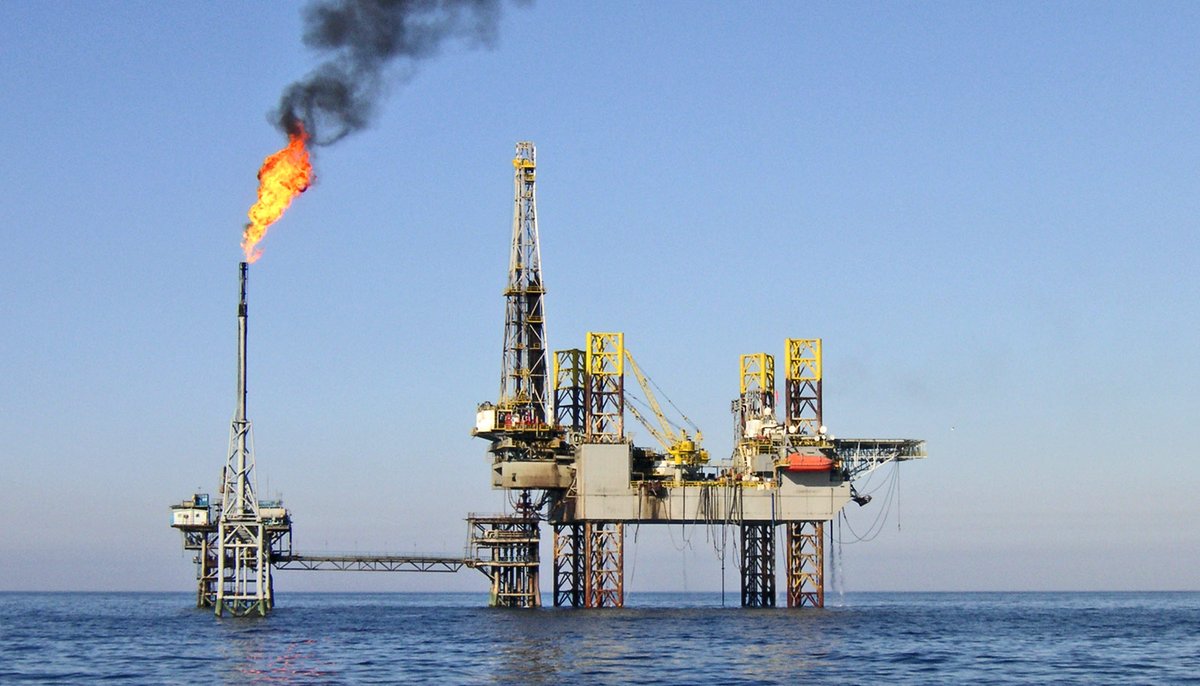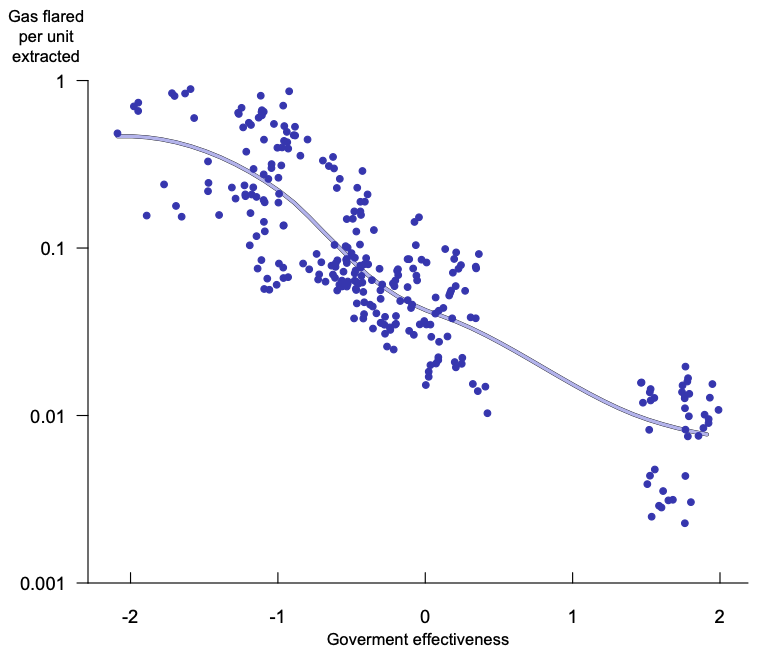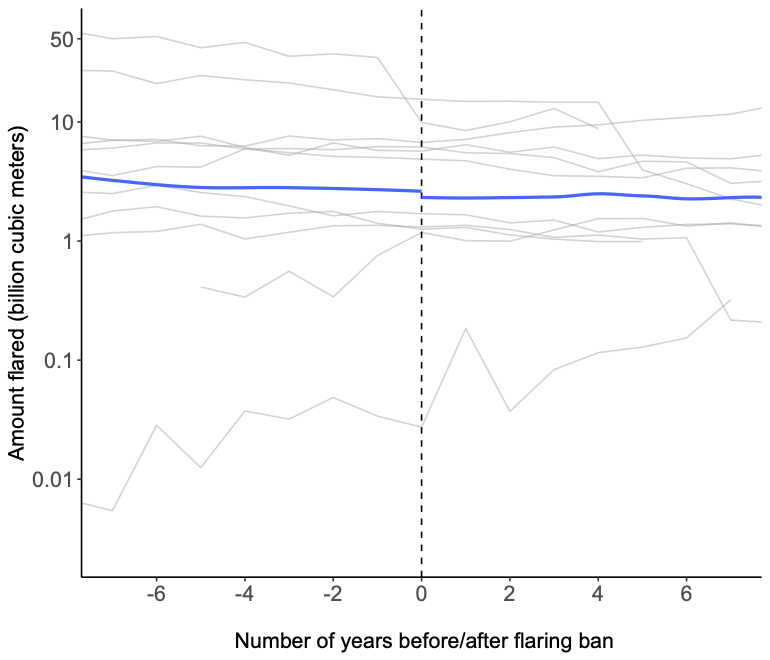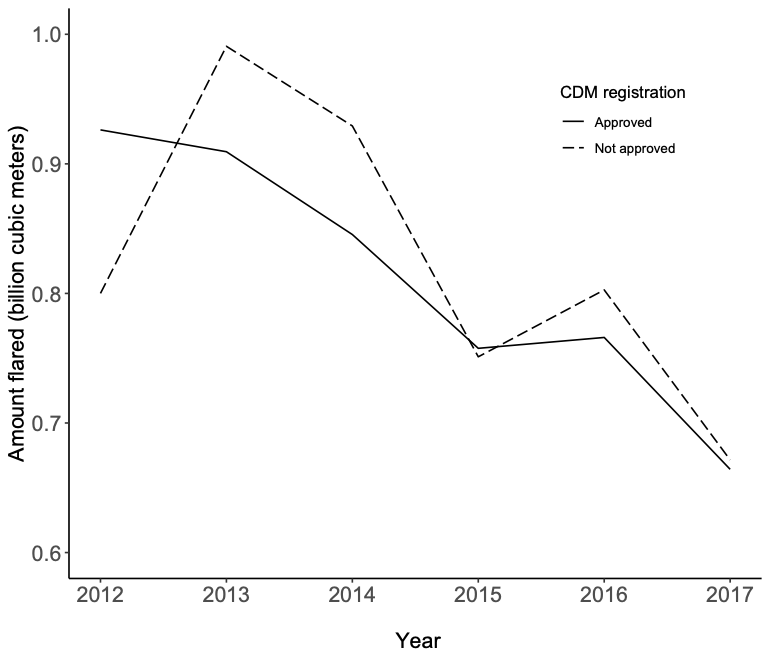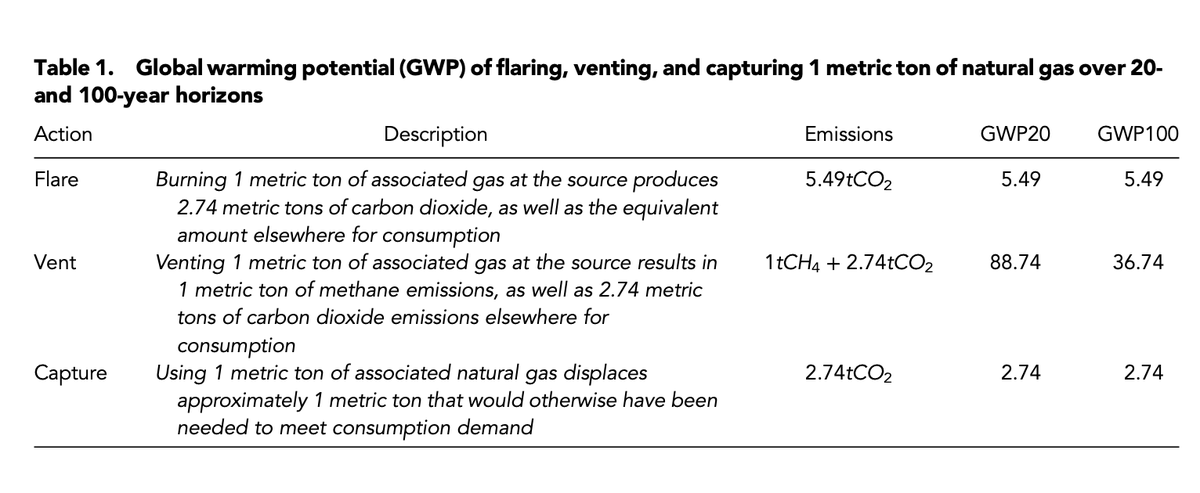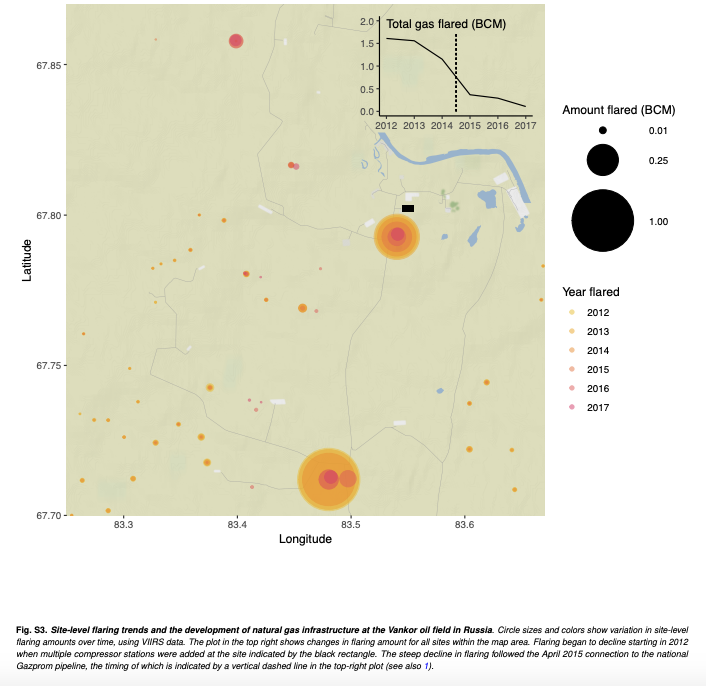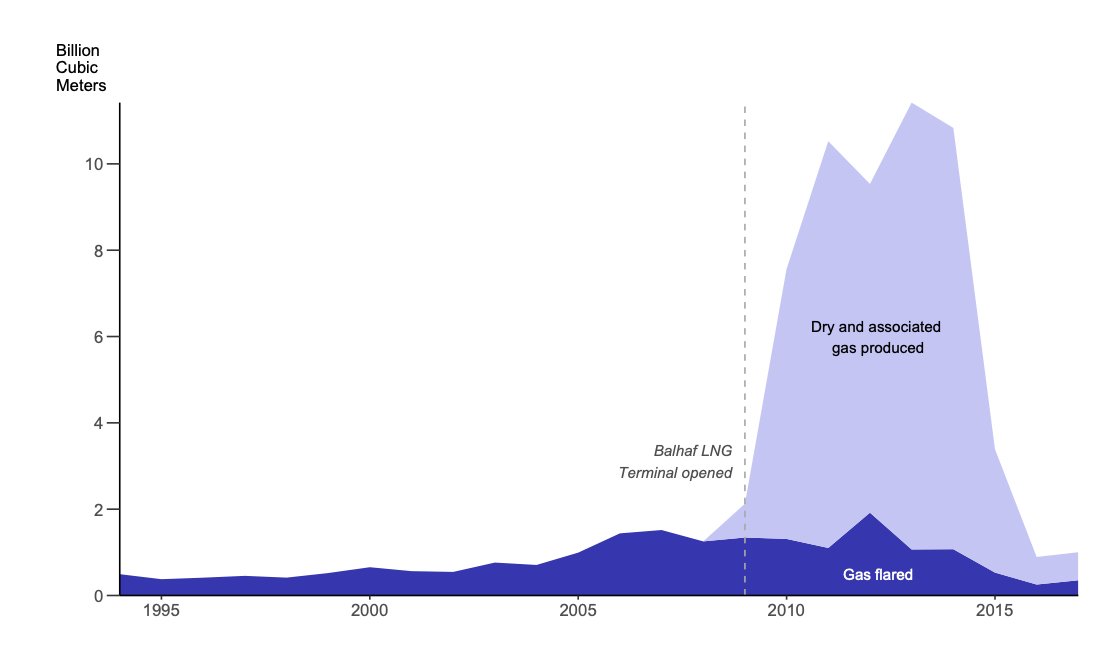Policies to reduce natural gas flaring may unintentionally increase the venting of methane -- a MUCH more potent greenhouse gas.
Our latest in @PNASNews, joint with Raphael Calel @McCourtSchool, and a quick https://abs.twimg.com/emoji/v2/... draggable="false" alt="🧵" title="Thread" aria-label="Emoji: Thread"> on the scale of the problem!
https://abs.twimg.com/emoji/v2/... draggable="false" alt="🧵" title="Thread" aria-label="Emoji: Thread"> on the scale of the problem!
https://www.pnas.org/content/early/2020/05/12/2006774117
/THREAD">https://www.pnas.org/content/e...
Our latest in @PNASNews, joint with Raphael Calel @McCourtSchool, and a quick
https://www.pnas.org/content/early/2020/05/12/2006774117
/THREAD">https://www.pnas.org/content/e...
Flaring constitutes 6% of global GHG emissions, and further wastes 8% of gas production every year. Since we’re literally burning fuel that’s in demand, this should be an easy fix, right? 1/
Far from it. Despite a drop-off in the mid 2000s and a concerted push towards #ZeroFlaring, global flaring levels have remained at pre-1995 levels. (h/t data from @NOAANCEIclimate DMSP and @PayneInstitute VIIRS https://payneinstitute.mines.edu/eog-2/viirs/ ).">https://payneinstitute.mines.edu/eog-2/vii... 2/
Most of the problem is concentrated among a few low-capacity hotspots like Nigeria and Iraq. Indeed, flaring does seem to negatively correlate with government effectiveness. 3/
But the US shale boom shows that it’s not just about low government capacity. @BarryRabe outlines the problem of political inertia across the US as state legislators failed to enact meaningful policy in the face of industry opposition. 4/ https://www.brookings.edu/blog/fixgov/2019/07/08/the-politics-of-methane/">https://www.brookings.edu/blog/fixg...
There’s long been a sense that flaring bans don’t work unless firms have some way to sell, use, or sequester gas. See e.g. @mthurber’s work on this for @energyforgrowth. 5/ https://www.energyforgrowth.org/memo/gas-flaring-why-does-it-happen-and-what-can-stop-it/">https://www.energyforgrowth.org/memo/gas-...
We found the same pattern using DMSP + VIIRS data: no reduction in flaring after bans were enacted. 6/
But not only are antiflaring policies ineffective, they risk a potentially HUGE problem: incentivizing firms to deliberately vent methane rather than flare it. Scary considering venting has 16x the warming potential of flaring accounting for displaced consumption. 8/
Why? Because venting is harder to monitor remotely. We’ve made great strides in measuring atmospheric CH4 (e.g. @tropomi http://www.tropomi.eu/ )">https://www.tropomi.eu/">... but we still lack spatial precision of flaring monitors to pinpoint exact sources of venting using satellites. 9/
Fantastic reporting by @HirokoTabuchi and @nytimes team on methane leaks in OH and TX highlights the monitoring problem, even in a high-capacity context like the US. 10/
https://www.nytimes.com/2019/12/16/climate/methane-leak-satellite.html
https://www.nytimes.com/2019/12/1... href=" https://www.nytimes.com/interactive/2019/12/12/climate/texas-methane-super-emitters.html">https://www.nytimes.com/interacti... https://www.nytimes.com/2020/02/19/climate/methane-flaring-oil-emissions.html">https://www.nytimes.com/2020/02/1...
https://www.nytimes.com/2019/12/16/climate/methane-leak-satellite.html
Yes, infrastructural investments -- pipelines, compressor stations, LNG terminals, etc. -- work to reduce flaring and venting at the source. We found lots of “success” stories, like this one from Russia’s Vankor oil field. 11/
But even these solutions have unintended consequences: more oil and gas production now that there’s an outlet for gas. In Yemen, for example, the Balhaf LNG terminal increased overall gas extraction to the point of no net decrease in flaring. 12/
So what’s the answer? Better monitoring! And production taxes on new fossil fuel infrastructural investments. We’re getting closer on the former with the soon-to-be-launched MethaneSAT from @EnvDefenseFund. 13/ https://www.edf.org/climate/how-methanesat-is-different">https://www.edf.org/climate/h...
En route to decarbonization, producers have to find a way to eliminate flaring and venting on top of CCS and decarbonized fuels like hydrogen.
See, e.g. great work by @RobinEnergy and @ColumbiaUEnergy’s @JasonBordoff on this. 14/
https://www.thenational.ae/business/energy/why-the-gas-industry-s-growth-hinges-on-pricing-and-sustainability-1.983159
https://www.thenational.ae/business/... href=" https://energypolicy.columbia.edu/research/op-ed/flaring-tax-can-end-wasteful-and-damaging-practice">https://energypolicy.columbia.edu/research/...
See, e.g. great work by @RobinEnergy and @ColumbiaUEnergy’s @JasonBordoff on this. 14/
https://www.thenational.ae/business/energy/why-the-gas-industry-s-growth-hinges-on-pricing-and-sustainability-1.983159
But in the meantime, the unintended incentives for venting are all more reason to suspect petroleum’s GHG impact to be *much* higher than we think.
https://www.pnas.org/content/early/2020/05/12/2006774117
/FIN">https://www.pnas.org/content/e...
https://www.pnas.org/content/early/2020/05/12/2006774117
/FIN">https://www.pnas.org/content/e...

 Read on Twitter
Read on Twitter